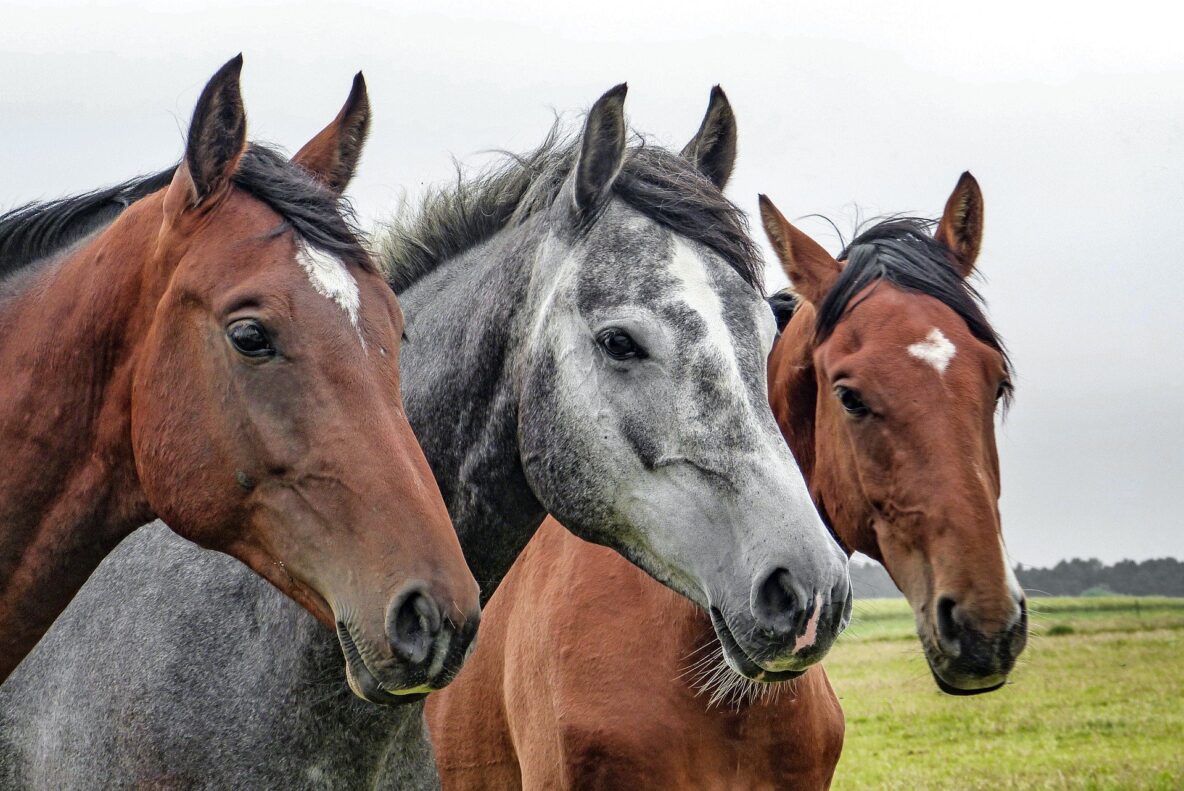Equine Cushing Disease
The average age of horses with Equine Cushing disease is 19 years old with a range of 7 to 40 years.
There is no sex predisposition but ponies appear to develop the disease more frequently.
Equine Cushing Disease results from the Pituitary Gland (P) (localised below the brain) that secrets abnormally high level of adrenocorticotropin (ACTH). The ACTH then stimulates the production of cortisol by the adrenal glands (A), localised next to the kidney (K). The cortisol then enters will the blood stream (B) and causes clinical signs like laminitis.
Clinical signs Among the wide variety of clinical signs associated with Equine Cushing Disease, the most common is hirsutism (long and curly hair coat), reported in 85% of cases. In addition to the long shaggy hair coat, that is not shed, a variety of other hair coat abnormalities can occur. For instance early signs of Equine Cushing Disease can be delayed shedding in the spring usually followed by an early re-growth of winter coat in the autumn.
Repeated bouts of laminitis are commonly observed. Excess in circulating cortisol is thought to be linked to this manifestation.
Pain secondary to laminitis represents the leading cause of euthanasia in horses with Equine Cushing Disease.
Body condition is often good; however, some horses with Equine Cushing Disease even exhibit a “cresty neck” and obese appearance. As the disease progresses, weight loss, muscle wasting and muscle weakness become apparent and lead to the typical “pot belly” appearance.
The occurrence of poor body condition at the later stage of the disease is often potentiated by internal parasitism and poor appetite secondary to dental disorders.
Horses with Equine Cushing Disease are predisposed to chronic infections and delayed wound healing. Lethargy, an increase in the amount of water drunk and an increase in the volume of urine produced are also commonly reported.
Treatment
The most commonly used drug for the treatment of Equine Cushing Disease is a dopamine agonist called “Pergolide”. Pergolide has been shown to decrease the secretion of ACTH by the Pituitary Gland.
Clinical improvement has been noted in 90% of horses treated after several weeks however the treatment generally needs to be continued until the end of the life of the horse. We therefore recommend taking a follow up blood sample after 4 to 6 weeks of treatment to adjust the dosage if necessary.
Side effects of Pergolide treatment rarely occur however anorexia and mild colic have been reported.
If your horse develops any of these side effects the vet should be contacted immediately, and the treatment adjusted accordingly.
The treatment of Equine Cushing Disease should include careful health management and preventive medicine. Particular attention should be paid to diet, vaccination, deworming, hoof trimming, good dental care and prompt response to infection.
Horses with long hair coat should be clipped during the warm season. In addition, because of their decreased ability to acclimatize to temperature variations they should be provided with rugs during the cold season.
Good quality feed, easily chewable for horses with poor dentition, is important. On the other hand, overfeeding should be avoided as it would increase the risk of laminitis on a horse already predisposed to it.
Laminitis is probably the most difficult complication to deal with, however, it appears that Pergolide for Equine Cushing Disease brings a substantial improvement in patient comfort and decreases the likelihood of further bouts of laminitis.

